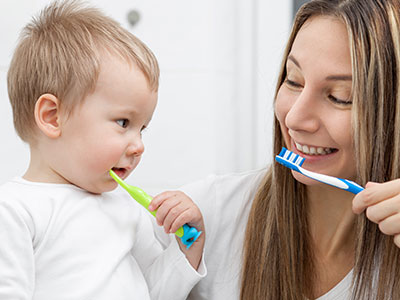 Here at Broomhill Dental, we see so many patients who just aren’t quite sure of the rules when it comes to brushing.
Here at Broomhill Dental, we see so many patients who just aren’t quite sure of the rules when it comes to brushing.
Whilst nearly everyone brushes their teeth twice a day, you might think that there is no real skill or technique required, or that timing doesn’t really matter.
However, making sure you’re doing it right can make all the difference and help to prevent issues like decay and gum disease whilst improving overall oral health and hygiene.
In this blog, we’ll take you through a few simple factors to consider when brushing, helping to improve your oral health with very little extra effort.
The Toothbrush
The bristles on toothbrushes can become worn very easily and – whilst you may not realise just how worn down they are – they can start to lose effectiveness pretty quickly. We recommend that you replace your toothbrush or electric toothbrush head every three months at least. And whilst we’re on the subject, we’d also always recommend the use of electric toothbrushes over manual brushes, as studies have shown that they can help to reduce plaque by up to 21% after three months of continued use*.
The Toothpaste
It’s important to make sure that you use a fluoride toothpaste unless you have been advised otherwise by your dentist. Most toothpastes do contain fluoride, but it’s important to check just to make sure, because there are often fluoride-free versions available. Fluoride helps to protect the enamel from damage caused by acids (found in the food & drink that we consume every day) and the use of a fluoride-free toothpaste will put your teeth at increased risk of decay.
The Technique
You should always ensure that you brush your teeth for at least two minutes at a time. Brushing should be done using circular motions, with the brush angled at around 45 degrees, pointing towards the gums. This allows the brush to overlap across the teeth and gum line, where the build-up of plaque is most common.

You should take time to cover all sections on the mouth, from back to front, top to bottom and remembering to brush the backs of the teeth as well.
You should also make sure to gently brush your tongue. This will help to reduce bad breath as a lot of bacteria sits on the surface of your tongue.
It’s helpful to apply some pressure when brushing your teeth, but you should be careful not to ‘scrub’ too hard or vigorously.
This can cause a bit of bleeding of the gums and over time may damage the enamel of the teeth, so applying some light pressure is more than enough.
The Timing
The most common times to brush your teeth are first thing in the morning and last thing at night. This is good practice, but there are a couple of factors that you should consider when doing this.
If you usually wait until after breakfast or dinner to brush, you could potentially be doing your teeth more harm than good. This is because, after we eat or drink, it can take our mouths up to an hour to naturally neutralise the acid that is left behind in our mouths from the food and drink that we have consumed. If there is acid present in the mouth, brushing can actually speed up the damage to your teeth, rubbing the acid further into the surface of the tooth and gums which causes decay.
For this reason, it’s better to brush first and eat second. If you’d prefer to brush after breakfast, try to ensure you’re leaving at least 30 minutes between eating and brushing to give your mouth a chance to neutralise some of that acid.
 We also strongly recommend adding what’s known as ‘interdental cleaning’ to your daily routine, at least once a day. Whilst you can use regular floss for this, studies have shown that interdental brushes – such as TePe Interdental Brushes– are far more effective at getting into the tiny gaps between your teeth that even the very best toothbrushes cannot reach. This helps to remove a build up of plaque which again decreases the risk of gum disease and decay.
We also strongly recommend adding what’s known as ‘interdental cleaning’ to your daily routine, at least once a day. Whilst you can use regular floss for this, studies have shown that interdental brushes – such as TePe Interdental Brushes– are far more effective at getting into the tiny gaps between your teeth that even the very best toothbrushes cannot reach. This helps to remove a build up of plaque which again decreases the risk of gum disease and decay.
If you have any questions or concerns around brushing and improving your day-to-day oral hygiene, get in touch with us now to find out how we can help.
*Stats reported by Healthline
